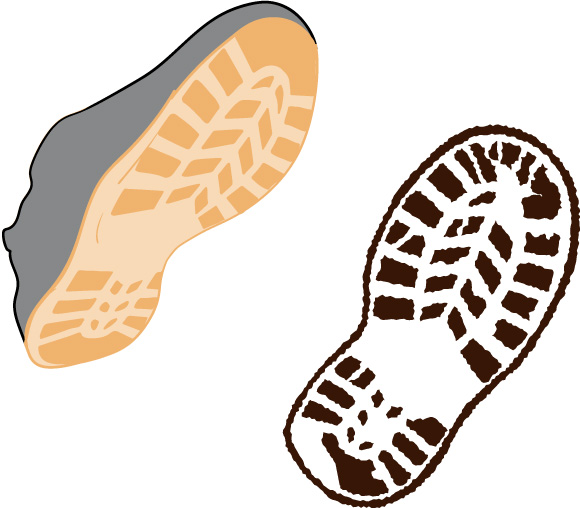6.3.2 Bayesian skepticism
A similarly sceptical approach towards Bayesian approaches was taken in R v T.Footnote 31 This was a murder case where key evidence was footwear marks from the scene. The prosecution expert assigned a ‘moderate’ degree of evidence to support the view that the trainers worn by T had made the marks. Upon further investigation, it turned out that he had used Bayes’ Rule to calculate a likelihood ratio from the sole pattern, size, wear and damage.
Controversially, it seemed that the footprints from the scene showed evidence of damage that did not correspond to the trainers recovered from T. This should therefore have been exculpatory evidence and, as you will recall from Section 4, should have been given a likelihood ratio of less than 1. But the expert gave it a value of exactly 1, meaning it was neither exculpatory nor inculpatory.
The Court of Appeal spotted the error and overturned the conviction. However, they were very critical of the use of likelihood ratios in non-DNA cases.
Many outside the legal world have expressed dismay at the court’s scepticism towards Bayes’ Rule, particularly as scientists consider it the only rational way to combine probabilities. For example, Thompson (2012) writes:
I will say at the outset that I think R v T is an inept judicial opinion that creates bad law. The opinion went awry because the justices who wrote it misunderstood a key aspect of the evidence they were evaluating. The justices sought to achieve laudable goals, but their misunderstanding of basic principles of inductive logic, and particularly Bayes’ theorem, led them to exclude a type of expert evidence that, in general, is helpful and appropriate in favour of an alternative type of expert of evidence that is fundamentally inconsistent with the goals the court sought to achieve. The case has already received severe criticism and will inevitably come to be seen for what it is – a judicial blunder.
In addition, it was because the expert had explained his reasoning using Bayes’ Rule that it was possible to see that he had made a mistake. If he had simply maintained that his view was that there was a moderate amount of support for the evidence, this mistake might not have been spotted. Nonetheless, there does not seem to be a completely satisfactory way of using Bayes’ Rule in non-DNA cases.
Footnotes
- 31 R v T [2011] 1 Cr. App. R. 9 (CA).Back to main text

